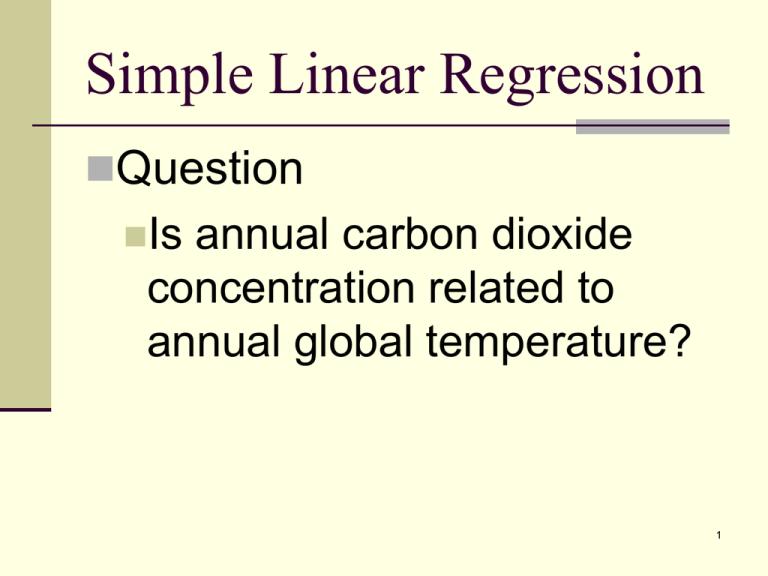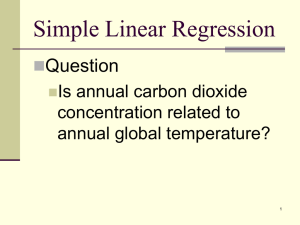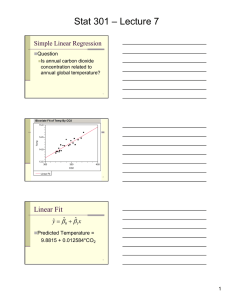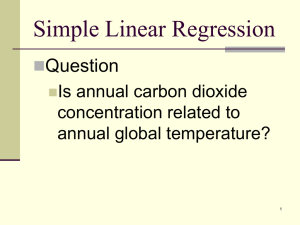Simple Linear Regression Question Is annual carbon dioxide concentration related to
advertisement

Simple Linear Regression Question Is annual carbon dioxide concentration related to annual global temperature? 1 Bivariate Fit of Temp By CO2 15.0 Temp 14.5 14.0 13.5 300 350 400 CO2 Linear Fit 2 Linear Fit yˆ ˆ0 ˆ1 x Predicted Temperature = 9.8815 + 0.012584*CO2 3 2 R (RSquare) 80.6% of the variation in the global temperature can be explained by the linear relationship with carbon dioxide concentration. 19.4% is unexplained. 4 Interpretation There is a fairly strong positive linear relationship between annual carbon dioxide concentration and annual global temperature. 5 Testing Hypotheses Question Is the linear relationship between annual carbon dioxide concentration and annual global temperature statistically significant? 6 Step 1 - Hypotheses H 0 : 1 0 H A : 1 0 7 Step 2 – Test Statistic Test Statistic: Std Error: ˆ 0 t 1 se( ˆ1 ) MS Error ˆ se( 1 ) 2 x x df n 2 8 Step 2 – Test Statistic ˆ1 0.012584 se( ˆ1 ) 0.001456 ˆ1 0 0.012584 t 8.64 se( ˆ ) 0.001456 1 P - value 0.0001 9 Step 3 - Decision Reject the null hypothesis because the P-value is so small (smaller than 0.05). 10 Step 4 – Conclusion Based on our sample data, there is a statistically significant linear relationship between annual carbon dioxide concentration and annual global temperature. 11 Confidence Interval * ˆ 1 t se ˆ1 t from t - table with df n 2 95% confidence , df 18, * t 2.101 * 12 Confidence Interval * ˆ ˆ 1 t se 1 0.012584 2.1010.001456 0.012584 0.003059 0.0095 to 0.0156 13 Interpretation – Part 1 The population slope parameter relating CO2 to temperature could be any value between 0.0095 and 0.0156. Units are o C/ppmv. 14 Interpretation – Part 2 We are 95% confident that intervals based on random samples from the population with capture the actual population slope parameter. This is confidence in the process. 15 Y-Intercept When the Y-intercept is interpretable within the context of the problem, it may be of interest to do inference based on the estimated yintercept, ̂ 0 . 16 Test of Hypotheses H 0 : 0 0 H A : 0 0 ˆ0 0 t ˆ se( ) 0 df n 2 17 Confidence Interval * ˆ ˆ 0 t se( 0 ) * t from t - table with df n 2 18











